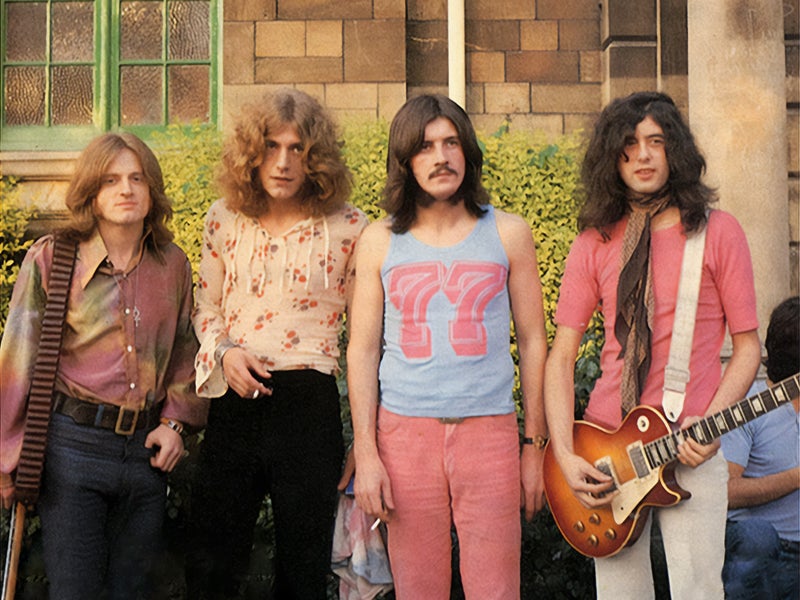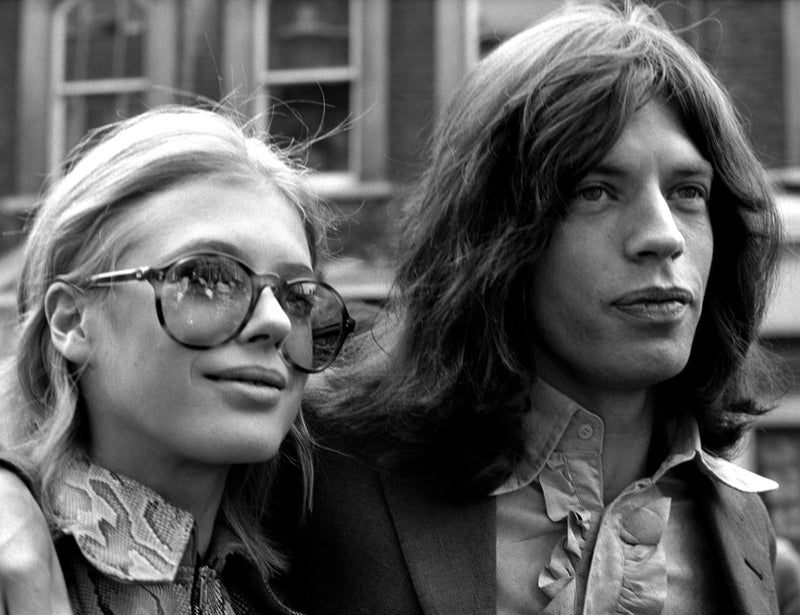The classical singer on scrimping and saving for his first guitar, being diagnosed with two brain tumours and getting back to music. Born in Salford in 1966, Russell Watson is the UK’s bestselling classical crossover artist. The tenor started on the north-west’s working men’s club circuit, before getting a record deal and releasing The Voice, an album that held the No 1 spot for 52 weeks. He has had seven Top 10 albums, more than 7m album sales, and has performed for Queen Elizabeth II, King Charles and the late Pope John Paul II. He is celebrating 25 years of The Voice with a UK tour.
I was 15 when this photo was taken. My childhood bedroom was the size of a postage stamp, but I still filled it with posters – Marilyn Monroe, Madonna and Paul Weller. I was obsessed with music, but even more with football. I wasn’t particularly interested in girls; my life revolved around hanging out with my pals.
I first saw this guitar in the window of a shop down the road from where we lived in Salford. It cost the grand sum of £300 – a huge amount back then. I asked for it for Christmas, but we couldn’t afford it – Mum was a stay-at-home mum and my dad worked at the steelworks. As money was scarce, I ended up getting a paper round. A year later, I got a second one as I was scared the glistening guitar in the window might go. After a few shifts washing cars in the school holidays, I managed to muster enough cash. That guitar was my favourite thing I’d ever owned. Foolishly, years later, during a phase of impecuniosity in the 2000s, I ended up selling it to help pay the mortgage.
My mum got me my first ever gig. She went into a local club and said: “My son and his friends play guitars. Would you be interested in having them on?” They agreed, and off we toddled for a set of Beatles covers. That night, there was a chap at the back of the room who began pleasuring himself. One of the staff went over to him and said: “Oh, Stan, put it away. For God’s sake.” We got paid in custard creams and a few cups of tea. It was a surreal introduction to life as a jobbing musician.
These days people pay good money for a ticket to my shows, but back in the 90s, the audience was mainly blokes saying: “Who’s on tonight? Russ Watson? Never heard of him.” They just wanted to have a pint and a chat with their friends about the latest episode of Coronation Street. I was a side act: I went on, did 20 minutes, and left with £60 in my pocket. At first I thought: “Why is nobody bloody listening to me?” After a while, I started to realise that to get an audience on side it would take more than singing. I had to draw them in, figure out what they liked; communicate and connect with them. While sometimes quite disheartening, it was a fabulous training ground. Over that decade, I learned how to become a performer.
In 1999 I went from singing to an audience of working-class people who predominantly wanted to play bingo, to working with one of the finest orchestras in the world. I was recording my debut in George Martin’s studio, the same studio the composer Hans Zimmer used. I thought: “This is amazing, but I’m sure I’ll be back in Wigan in a year.”.
That wasn’t the case. From 2000 to 2001, life was all so sparkly and exciting. I was like this little puppy-dog with a wagging tail that had just been brought into its new home. When the media machine gets behind you, there is nothing like it. People really embraced classical crossover: before me, there had been Nigel Kennedy, Aled Jones and Vanessa May, but none of them had explored the realms of pop quite so intensely. My album had covers of Ultravox’s Vienna and Nessun Dorma, and I even collaborated with Shaun Ryder of the Happy Mondays.
Working with Shaun on Barcelona was a little bit riotous, but that’s what made it so brilliant. We were booked for Jim Davidson’s Saturday night TV show, which was a big deal at the time. Everything was choreographed – I would come on, then Shaun would follow me out of the dry ice four seconds later and do his thing. Instead, I walked out and Shaun stood right behind me, grabbed my right arse cheek and squeezed it really tight. The whole thing descended into chaos. But I loved it, and the record went through the roof. My success felt like a wave, and the wave kept rolling. Up until it didn’t, in 2003.
Sign up to Inside Saturday. The only way to get a look behind the scenes of the Saturday magazine. Sign up to get the inside story from our top writers as well as all the must-read articles and columns, delivered to your inbox every weekend. after newsletter promotion.
I was due to be performing at the MEN arena (now known as AO Arena): 14,000 tickets, all sold out. I wasn’t well. I had a throat infection, and I wanted to cancel. Around that time I had a very pushy manager, and they refused to reschedule, so I went ahead with the gig. The next day I woke up and the falsetto area of my voice had completely gone. My worst fears were confirmed by a doctor – I had hard lumps on my vocal cords, polyps. That was the first health issue. After that, everything that could go wrong did go wrong.




-has-died-at-the-age-of-78.jpeg?auto=webp&width=800)


























